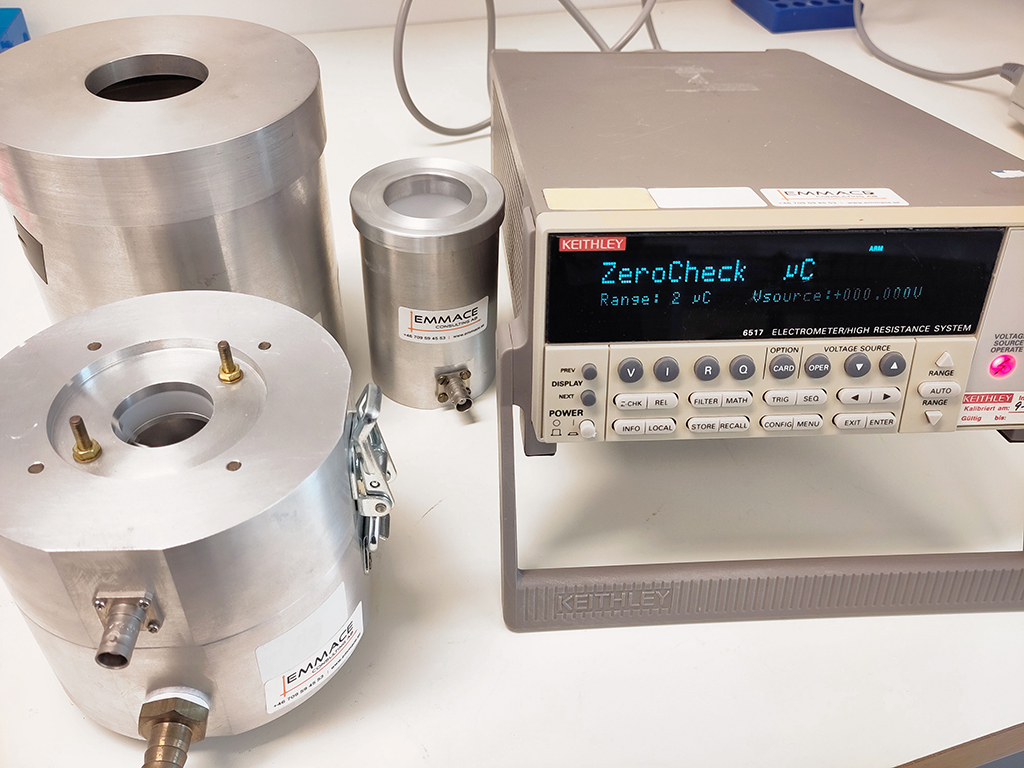Electrostatic Characterization with Faraday Box
Electrostatic Characterization with Faraday Box
The Faraday box provides an environment shielded from electromagnetic radiation or disturbing electrostatic currents, which decreases the noise level and improves the sensitivity of electrostatic characterization measurements within the Faraday box.
At Emmace we can perform electrostatic characterization measurements with high sensitivity within our Faraday boxes. For example, testing the electrostatic properties of particles coming out of an inhaler by capturing the powder inside the box. It is also possible to measure the change in electrostatic charge of an inhaler before and after dose emission and assess differences between different device models.
A Faraday box (or cage) is basically a box with metal lining. Whitin metal material electrons are free to move. When an external electric field is applied over a Faraday box, the electrons move to the side of the box closest to the positive pole of the external electric field. The increase of electrons in that side of the box will create an induced negative pole and the decrease of electrons in the other side of the box will create an induced positive pole. Hence, within the Faraday box an electrical field with opposite direction to the external field will emerge. These two opposing electrical fields cancel each other to yield a zero net field within the box.
The Faraday box also shields its interior from sudden electrostatic currents since all currents will pass the metal box externally.

Figure 1. Faraday boxes and the electrometer.

